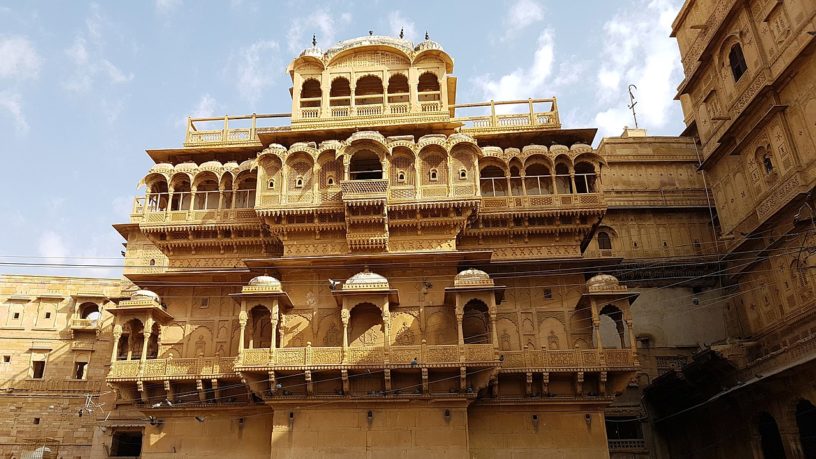Top 10 Unbelievable Facts about Jaisalmer Fort
Jaisalmer fort is one of Jaisalmer city’s most popular landmarks. It’s among the world’s largest forts and is a replica of the fort in Arabian nights, the well-known television cartoon. Jaisalmer fort is different from other forts of Rajasthan. It houses several hotels residential accommodations, shops, restaurants, and museums.
Built in 1156, Jaisalmer Fort is the Bhati clan’s honoured chattel. Jaisalmer city was founded by Rawal Jaiswal, and it was during his reign that the Jaisalmer fort was built. Of the 99 bastions that the fort has, 92 were built between 1633 and 1647.
Located on Trikuta Hill, Jaisalmer Fort has been the scene of many battles. It displays the fusion of Rajput and Islamic architecture. You can reach this fort through 4 gateways. These gateways are Hawa Pol, AkshyaAkshaya Pol, Ganesh Pol, and Suraj Pol. There are several attractions in the fort including Jain temples, the Laxminath temple and the Raj Mahal (Royal Palace).
Made in line with the Rajasthan standards, Jaisalmerthe fort includes a city against a red-and-yellow background. Travellers and photographers marvel at the fantastic sunset viewed from the fort. The fort is usually known as ‘Sonar Kila’ due to the yellow sandstone it’s made of. When the sun’s rays first hit the ground early in the morning, the fort looks golden in that light. It overshadows the town of Jaisalmer and looks like a palace in a fairy tale.
Below are ten exciting facts about Jaisalmer fort.
1. Jaisalmer Fort was the Residence of Several Rulers
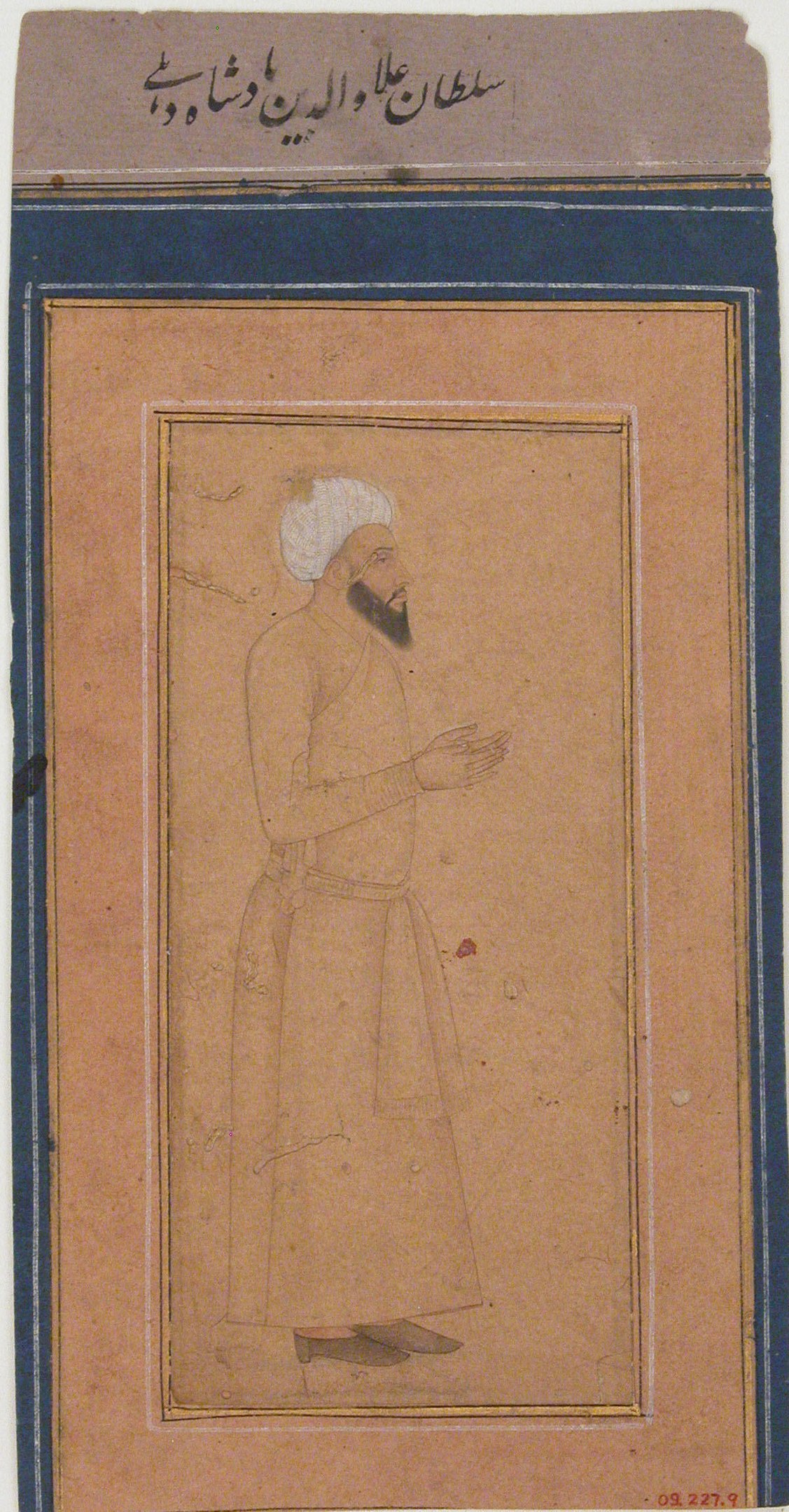
Portrait of Sultan ‘Ala-ud-Din, Padshah of Delhi. Photo by Gift of Dr Julius Hoffman, 1909/Wikimedia Commons
Built in 1156 AD, the fort was strengthened by Rawal Jethsi who added fortresses. The fort saw an 8 to 9-year siege around 1294 AD. Alauddin Khilji defeated Rajputs and ruled the fort for 9 years.
Surviving Rajputs reclaimed the fort later after it lay abandoned for a few years. IN the 15th Century, the Rajputs were once again under attack although reinforcements arrived and Amir Ali was defeated.
Later, the fort went to the Mughals who ruled it till 1762. Thereafter, Maharawal Mulraj took control before it went to his grandson Gaj Singh.
2. Jaisalmer Once Served as a Trading Route
Jaisalmer is located on the trade route connecting China to the west. Due to its location, most merchants opted for this route instead of going through the central Asia mountains.
During the British rule, the trade centre moved to Bombay. This led to the economic decline of Jaisalmer. During the partition of India, the route was closed completely.
3. Jaisalmer has other Different Names
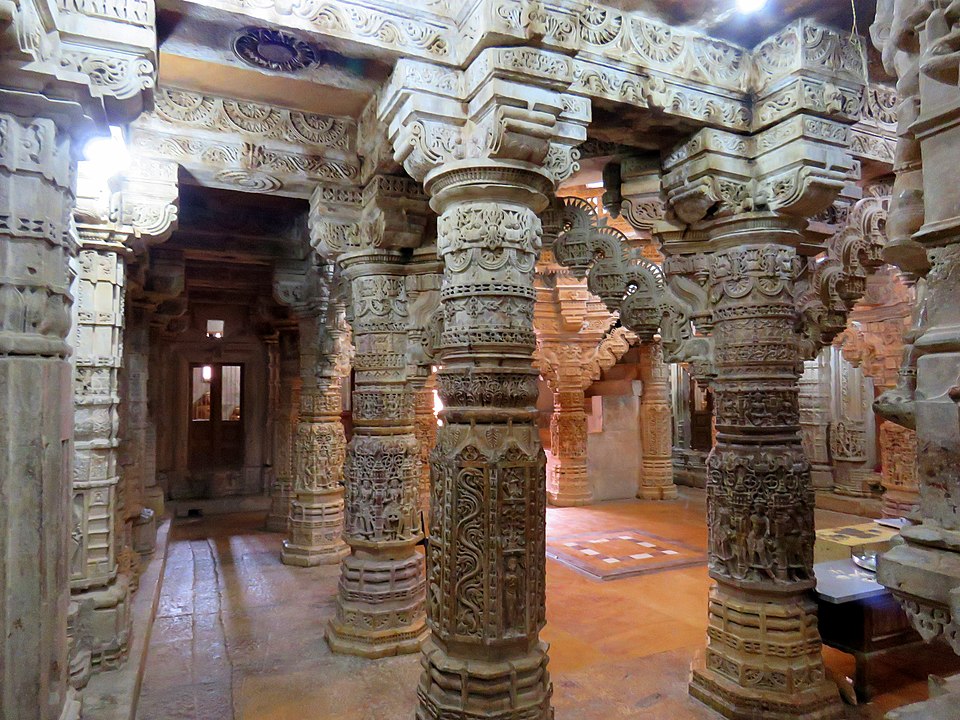
Interior of one of the Jain temples inside Jaisalmer Fort, Rajasthan, India. Photo by Shitha Valsan/Wikimedia Commons
The fort and the town of Jaisalmer are made of Yellowstone. This has earned the town the name the ‘Golden city of India.’ Jaisalmer fort on the other hand is referred to as ‘Sonar Quila’ or the ‘Golden fort.’
You can get a view of the fort to understand where it gets its name from. From Vyas ki chhatri, the sunlight falls on the fort giving it a golden shade, hence the name.
4. Jaisalmer Fort is experiencing damage due to overpopulation
Population increase and the availability of water are causing damage to the fort. The strain of a population that has grown several times is evident in the fort’s structure. Encroachment, tourism boom, illegal construction, water seepage and seismic activity are some of the major concerns.
The foundation of the fort is prone to water seepage as it was built on a weak sedimentary rock hill. The poor drainage system causes water from the houses to leak into the fort resulting in loose stones.
Jaisalmer fort is built on three fault lines in a seismic zone. In 2001, the fort was significantly damaged by the Gujarat earthquake. Additionally, in 1999, two bastions and parts of the fort wall collapsed causing global concerns.
Over the years, the fort has survived sandstorms, earthquakes, wars, heavy rainfall and famines. Now, however, the fort shakes and crumbles.
5. UNESCO Declared Jaisalmer Fort a World Heritage Site
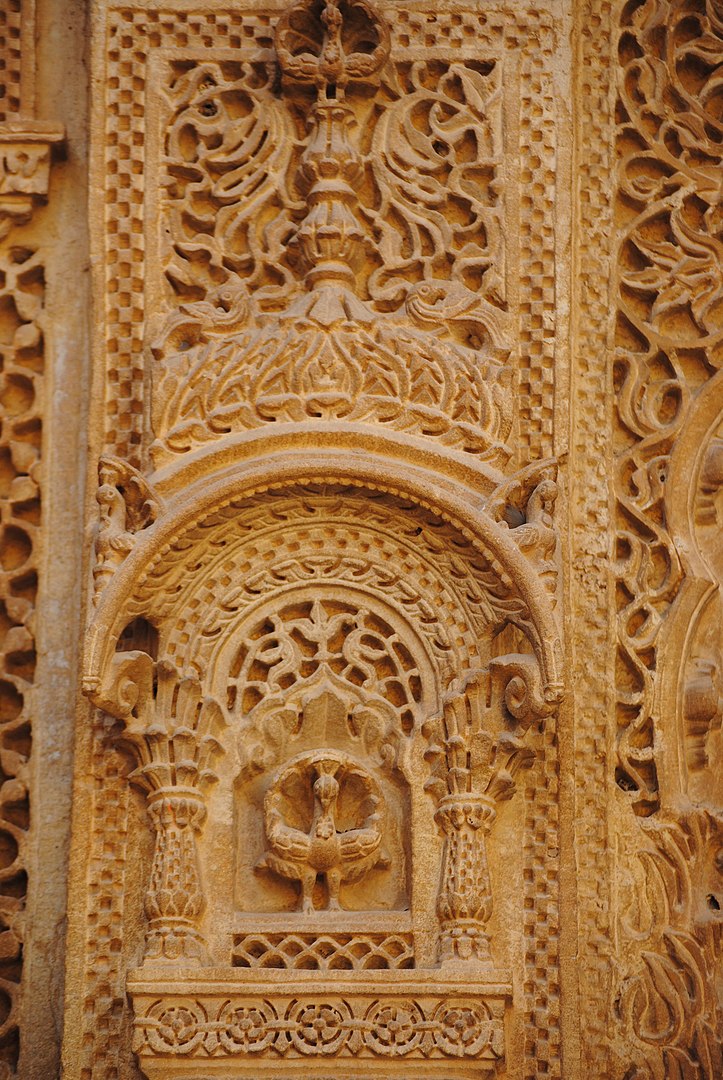
Jaisalmer-palaces and forts. Photo by Schwiki/Wikimedia Commons
Jaisalmer Fort is a UNESCO World Heritage Site. It was declared a world heritage site in the group Hill Forts of Rajasthan located in the city of Jaisalmer in Rajasthan, India. In 1156 AD, Rawal Jaisal, the Rajput ruler, built the fort and it’s from him that the fort derives its name.
The fort which is also known as the Sonar Quila or Golden Fort has yellow sandstone walls. During the day the walls are tawny lion colour and as the sun sets the walls t to become honey-gold. This helps camouflage the fort in the desert.
6. One of Jaisalmer Fort’s entrances used to be guarded by a cannon
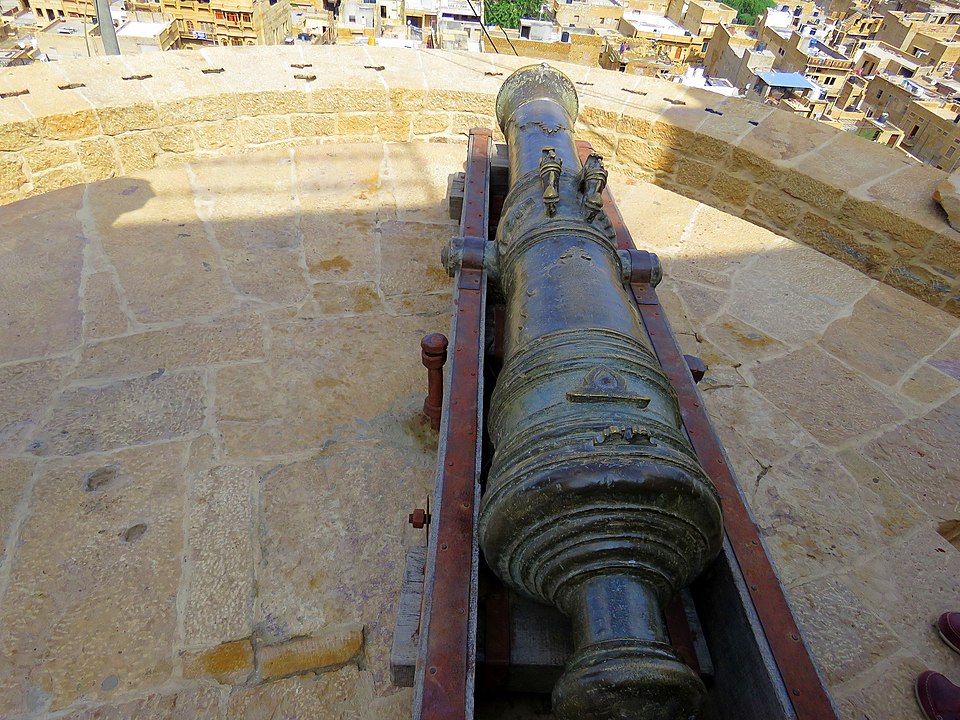
Cannon at Jaisalmer Fort. Photo by Shitha Valsan/Wikimedia Commons
The length and width of Jaisalmer fort are 1,500 feet (460 metres) and 750 feet (230 metres) respectively. The fort is also built on a hill that towers 250 feet (76 metres) above the nearby area.
The fort’s basement forms a double line of defence with its 15 feet (4.6 metres) tall wall. The fortresses form a chain that’s about 30 feet (9.1 metres). One of the four entrances to the downside was guarded by a cannon.
7. The Fort has a device on one of the walls that were used to tell the weather
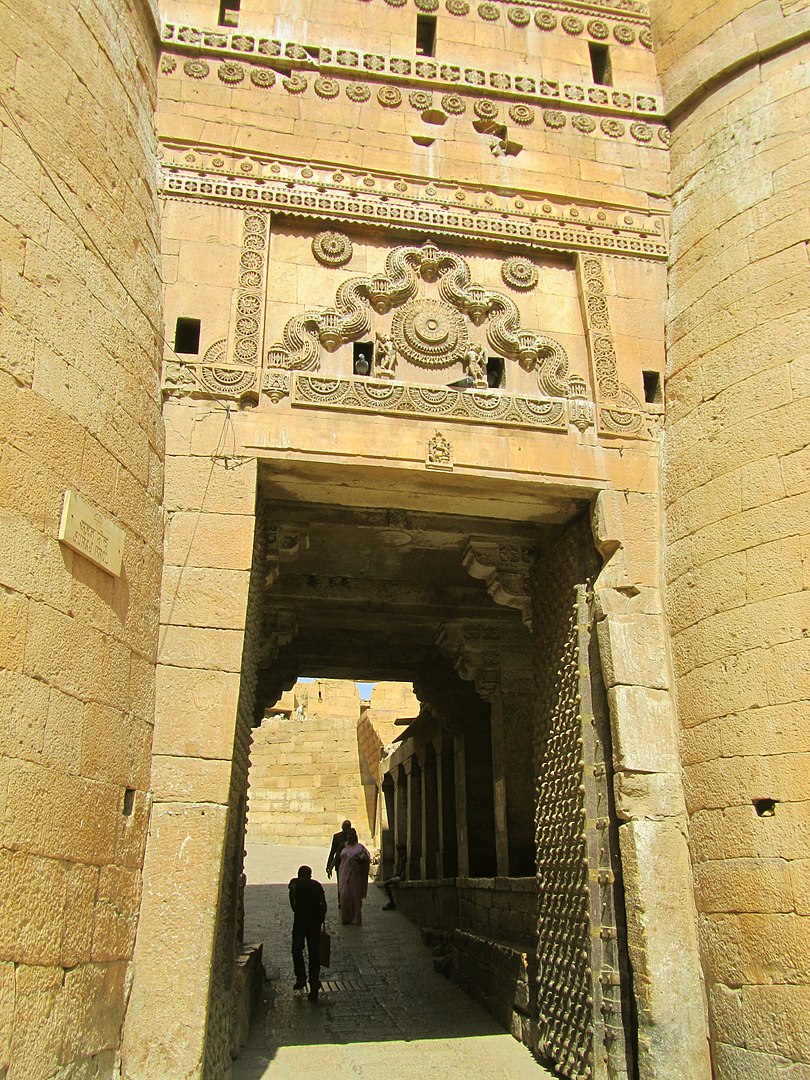
Suraj pol is one of the three gates of the Jaisalme Fort. Photo by Jaikumar2000/Wikimedia Commons
Hoisted on one of the walls is a crest that was used to tell the weather. This fascinating blend of Rajput and Islamic architectural styles creates a beautiful sight at night.
8. Various Organizations contributed to the Restoration of Jaisalmer Fort
There is an increasing population living inside Jaisalmer fort. Since the fort was built over a weak sedimentary rock, one of the threats to the fort is seepage.
This has resulted in the collapse of several buildings within the fort. Several organizations such as American Express and the World Monuments Fund gave funds to help with the restoration of the fort.
9. Jaisalmer’s Havelis are Hundreds of Years Old
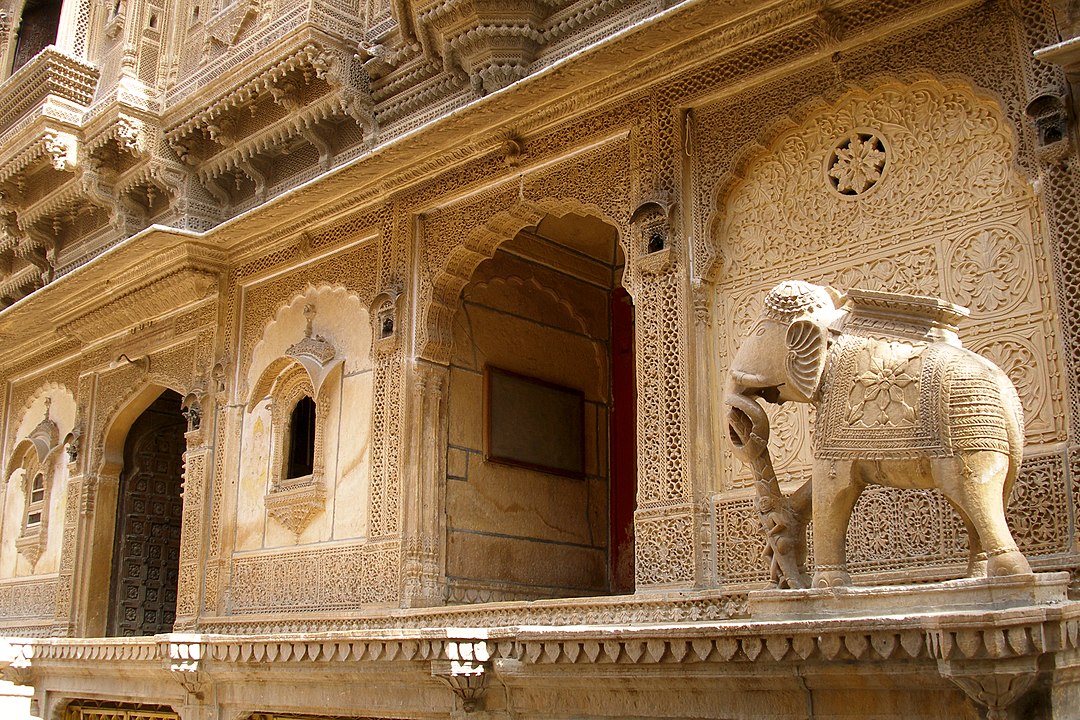
Traditional townhouse or mansion with intricate ornate sandstone carvings. In Jaisalmer there are many elaborate havelis carved from yellow sandstone. Photo by Vyacheslav Argenberg/Wikimedia Commons
Jaisalmer has several intricate yellow sandstone Havelis, some of which are hundreds of years old. Some of these have many rooms, many floors, archways, balconies and decorated windows. Among others, the Laxmikanth Temples, The Jain and Raj Mahal are the most visited.
10. Jaisalmer Fort is a Popular Tourist Attraction Site
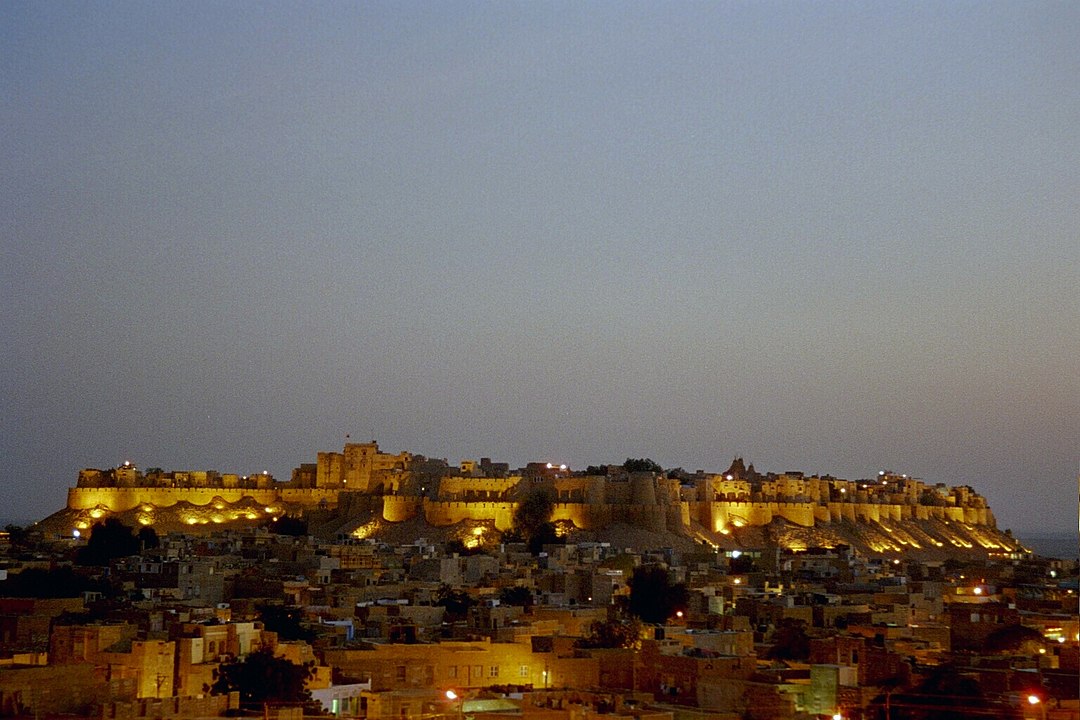
Old town / Fort of Jaisalmer, Rajasthan, India. Photo by Adrian Sulc/Wikimedia Commons
The Jaisalmer Fort is so vast that about a quarter of the town’s population is located in the fort. It has narrow winding paths which interconnect several places in the fort.
The Maharawals which is located in front of Chauhata Square is one of the most renowned structures. It has a Maharawal’s marble throne which is placed above a flight of marble steps. A five-storied Tazia tower situated head-to-head with the Maharawals palace is another tourist attraction site.
Planning a trip to Paris ? Get ready !
These are Amazon’s best-selling travel products that you may need for coming to Paris.
Bookstore
- The best travel book : Rick Steves – Paris 2023 – Learn more here
- Fodor’s Paris 2024 – Learn more here
Travel Gear
- Venture Pal Lightweight Backpack – Learn more here
- Samsonite Winfield 2 28″ Luggage – Learn more here
- Swig Savvy’s Stainless Steel Insulated Water Bottle – Learn more here
Check Amazon’s best-seller list for the most popular travel accessories. We sometimes read this list just to find out what new travel products people are buying.

